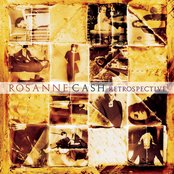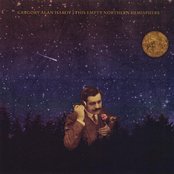Here’s a quick one for a Sunday. Some time ago, reader and Bon Viveur David Evans found this image for sale at a church fayre in Brownhills, at I believe at St. James. He didn’t purchase it, but he did take a crafty snapshot.
Here’s what he had to say:
I think it may well be the original Fleur-de-Lys , on the Watling Street… Perhaps Norton Canes folk can identify it?
I snapped a photo of this while it was in a frame and for sale at St James church some while ago, so it remains their property -but I forget to note the details
cheers
David
The last incarnation of the Fleur-de-Lys, as the Water Margin restaurant, burnt down a couple of years ago (those pesky arsonists again…), but the original was quite noted, I believe. The pub in the picture is clearly a pub in a mining area – check the brace trusses around the building.
Remember, the Grove Pit Disaster was said to take place ‘under the Fleur-de-Lys’.
Further, was there a history of fox hunting hereabouts? Was this an activity the occupants of a local hall may have been involved in? It’s not something I’ve noted recorded here at all. Perhaps it was a hazardous activity in a landscape covered with abandoned mineshafts and bell pits…
On a side issue, ‘Sparking Ales’ – this is before lager, I presume. Whats that all about, then?
All contributions welcome. Comment here, please, or BrownhillsBob at Googlemail dot com. Thanks.
Oh, and the title? Can’t let that pass. RIP Minnie. A real singer.


 RSS - Posts
RSS - Posts









The South Staffordshire Hunt met on Friday at the Fleur-de-Lys, Norton Canes.
Spion Cop was first drawn, and a brace of foxes were lying on top….
Lichfield Mercury Feb 1915
Great News the Fox got away
Other places…Holly Bank Gorse, Wingrove Wood, Birch Wood, Park Wood, back to Wingrove Wood, Birch Wood, over Castle Hill, through the Goose and Broom Coverts, over the Manor Farm. then he crossed the Wolverhampton Road, and lost near Moseley after a very fast gallop of forty five minutes
I think this is the Rising Sun, if you look at the windows on the top, don’t know, just a guess ..
That’s very well remembered, but I think the rising sun had more gables – it’s on the right in this picture of the Rehoboth Chapel which suggests 4
https://brownhillsbob.files.wordpress.com/2013/02/mbp025.jpg
Great observation though – impressed!
Cheers
Bob
Well, it does say “FLEUR DE LYS” on the front. I can’t find a Thomas Shakespeare in the censuses, though he could have been between censuses or before 1841 or after 1911. It’s a bit too sketchy to get a feel for when the costumes would be in vogue, but do I detect a cloche-style hat on the lady behind the furthest left of the hounds?
I agree about the bracing suggesting a mining area.
Thanks, Andy. I worded it badly – I should have said ‘Is this our Fleur-de-Lys?’
I was in a hurry – but thanks. Was hoping someone would spot the landlord…
Cheers
Bob
In Whites Directory of 1834 the Fleur de Lis was with William Smith
Is the building on the left the same as the one I see on Google Earth?
Looks possible
http://goo.gl/maps/8bheh
Sparkling Ale…
Although the ‘Hull ale’ which Samuel Pepys drank in London in 1660 may have been brewed at Burton, it is not until the early 18th century that there is evidence for the availability of Burton ale in London: a song in praise of Burton ale in a collection of 1709 opened with the lines ‘Give us noble Ale, of the right Burton pale, and let it be sparkling and clear’;
Also in 1822 Samuel Allsopp’s head brewer succeeded in reproducing a bitter, sparkling ale which London brewers had been for some time exporting to India. The qualities of the local water made the pale ale brewed in Burton especially suited to longdistance transport, and other local brewers followed suit, with the result that by 1832 the Allsopp and Bass breweries dominated the exports to India. Burton pale ale also became popular in the home market.
http://www.british-history.ac.uk/report.aspx?compid=12335
1879….
Sparkling Ale, as if by magic. The patent Burton Gelatine Powder will fine Ale in a few hours. The Excise by special grant allow its use.
Boxes one shilling and a penny halfpenny, and 2 shillings and nine pence.
All chemists….
You know, you really can ask anything at all here. You lot are incredible! 😉
Cheers
Bob
Well, where was Spion Kop, near Norton Canes?
Not in my searches – new one on me? Battlefield near Ladysmith, SA about 1900.
Seems to be some references to Oop North, too.
Cheers
Bob
A lot of football grounds have / had terraces called something Kop. Not heard of it related to Norton. Conduit pit mound, perhaps?
A distinct possibility then – the landscape was quite mobile in those days.
Cheers
Bob
Bob. Andy. How you doing? At last something I have some knowledge of, albeit from my school days in English Literature.
The battle of Spion Kop was during the second Boer war, the hill you refer to Bob was called “Spion Kop” the name originates in Affricans as something like a mound or pile or something like that from memory. The first reference in Football was by a local hack in North London, who had also covered the war in South Africa, who when at an Arsenal game saw crowds standing on a newly created “hill” to allow better viewing for the ever increasing number of people watching football at the time. He thought that the hill resembled the Spion Kop in South Africa and coined the phrase “Kop”. The most famous one being Liverpool but there are others of course.
Maybe the spoil / slag heaps of Norton and surrounding areas looked like the Spion Kop in South Africa.
Therefore in answering young Pedros question of “Where was Spion Kop”? maybe there wasn’t one as such but many, given the landscape at that time.
Just a thought……. mind how you go…….
Peter.
Thanks, Peter – fascinating.
Cheers
Bob
Landlords of the Fleur de Lis at Watling Street, Norton Canes:
1818 William Smith – Parson’s Directory
1834 ditto – White’s Directory
1841 Not checked
1851 Joseph Mountford – White’s (p574 under Inns and Taverns) and census (farmer of 130 acres)
1861 Edward Rowley – census (licenced victualler and farmer)
1871 ditto
1881 Louise Lindop? – census unclear as no mention of victualler, innkeeper or similar
1891 William Birch – census, though building not named
1896 Henry Badger – Kelly’s Directory
1901 William Henry Brown – census
1904 ditto – Kelly’s
1911 Robert Lane – census
1912 ditto – Kelly’s
Also
“It was during the middle years of the 19th century that Norton began to change from an agricultural village centered around the church, and the old Fleur-de-Lys to an industrial village centered around the coal mines running along the road from Cannock to Brownhills.” [Presumably, via Heath Hayes?]
From http://www.churches.lichfield.anglican.org/rugeley/norton/#hist.
The picture is dated, bottom left at full mag. which looks like 5/10/78 ? With a title or name above it within the ground shading, The hem lines and high heals plus hats suggest that this could have been drawn from a photograph, this sort of drawing was very popular around the late 70’s, I did a good few at the time when I was an art student.
I took the section and cleaned it up a bit. date
Oh, well spotted Barry. Cheers.
Bob
At the time as a graphic design student while at Art College, I was asked to take an old photo and reproduce it in a way to make it look older then it was by adding Vicky characters! I looked at the style of this drawing, The artist possibly used a fine line felt pen, no variation in line thickness that a dip ink pen would produce. The rendition of the horses is some what crude, check out the over strike of shading lines on some of the elements within the image. A talented self educated artist for sure, I must admit to liking it. But do not take is as gospel?
Another indicator that this is a reworked of a photo, vertical walls are disappearing to a vanishing point well above the image, In other words, an artist working in front of a building will be correcting without thinking vertical perspective. Anyone with experience will correct this lens parallax distortion when working from a photo.
Hi, there is a hill near Rugeley on the Chase known locally as Spion Kop probably a nick name given during the Boer War, perhaps the name has dropped from use now. The Norton locals all called the pub The Luce.
Alan Harvey.
There is an area between Wandon and Lower Cliff called Stile Cop – wonder if that’s a corruption of it?
Cheers
Bob
The old maps give the spelling Fleur de lis rather than Fleur de lys I’ve long reckoned that was a mistake
If you look at the Victorian / Edwardian maps the layout of buildings fits well with this drawing
I found an old beer bottle on Pouk hill quarry years ago embossed with the words Fleur de lys I always wondered if the bottle was from this pub.
Looks like there are alternative spellings, but interesting to see that “lis” is given as the plural of “lys”.
As I understand it the singular allows that lis and lys are interchangeable and the plural would be fleurs de lis / lys.
I’ve looked at the old maps again and the maps from 1880s until the 1950s use the spelling “lis” after the 1950s the spelling “lys” is used as the 1915 newspaper uses “lys” I assume it was always “lys” and the map was incorrect for the best part of a century.
Notice too in this drawing that the far right horseman is wearing a bowler hat which would put it 1880s or later.
The women are wearing hats of a type that became fashionable around 1920 and the amount of ankle on display wouldn’t have been seen any earlier than the 1920s.
I recon the date for this drawing is 5/10/1928 if Tom Shakespeare was landlord then that would pretty much confirm things.
THROW GRAMMAR FROM THE TRAIN,
http://throwgrammarfromthetrain.blogspot.co.uk/
As a French speaker, I can say with authority that it is not really a pronunciation problem at all, but rather a spelling one. “Fleur de lis” literally means “lily flower” but there are two ways of spelling it: “lis” and “lys”. This is because it’s an old word and during periods of foreign influence in France, many words that were spelled with i began being spelled with y (just like king, which is spelled as both “roi” and “roy”). But y is not really a French letter, and most French people make a point of this by changing the pronunciation by stressing it. Therefore, if it’s spelled as “lis” it should be pronounced LEE, because a lone s after an i is normally silent in French. If it is spelled “lys” however, it should be pronounced LISS, like in “kiss”, although the s sound isn’t that hard. ( But NOT LEES, no one says Fleur de LEES!!!)
Long story short, it is either “fleur de lis” = Fluhr de LEE, or it is “fleur de lys” = Fluhr de LIS. Neither “lis” nor “lys” should ever be pronounced LEES.
FEBRUARY 15, 2013 AT 6:01 PM
STAFFORDSHIRE ARCHAEOLOGICAL AND HISTORICAL SOCIETY (DAVID HOROVITZ 2013)
Returning from a tour to North Wales in August 1793, the Hon. John Byng spent two nights confined by heavy rain at the Fleur-de-Lis (‘a capital inn … a clean good ale house’) at Norton Canes – where he was astonished at the meagre bill for his food and stabling – before resuming his journey along Watling Street (‘quite deserted’) to ‘Cank Heath, by the coal-pitts, a black boggy heath, –over which, the road of three miles, is stoney, and disagreeable. –I quitted it at the hamlet of Wall … ’
This is the Fleur de Lis in Norton Canes. I was a little unsure at first as it sports Allsopp’s Brewery, which was from Burton on Trent, but Tom Shakespeare was publican from 6 Dec 1926 to 22 Apr 1929. The pub was leased to Showell,s Brewery by the Hussey family, but in 1914, Showell’s sold out to Allsopps – so there you have it.
I am researching a Singer car event that took place on 27th August 1939. The event used the Turf Inn and Fleur-de-Lys as meal stops. I have some pictures of the cars at the Fleur de Lys in the car park and would like to see any other pictures of the pubs from around that time.
Barry Paine
Sorry, 9 years late to the party on this one, and you may have already seen it, but I have found the photo this morning that the drawing in this post is definitely copied from, found on the Norton Canes History site –
https://www.nortoncaneshistory.co.uk/wp-content/uploads/2016/04/11-Fleur-De-Lys.jpg